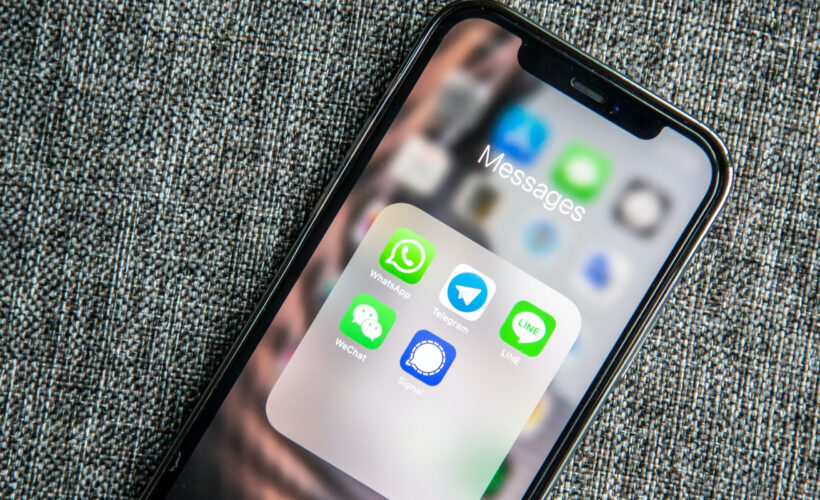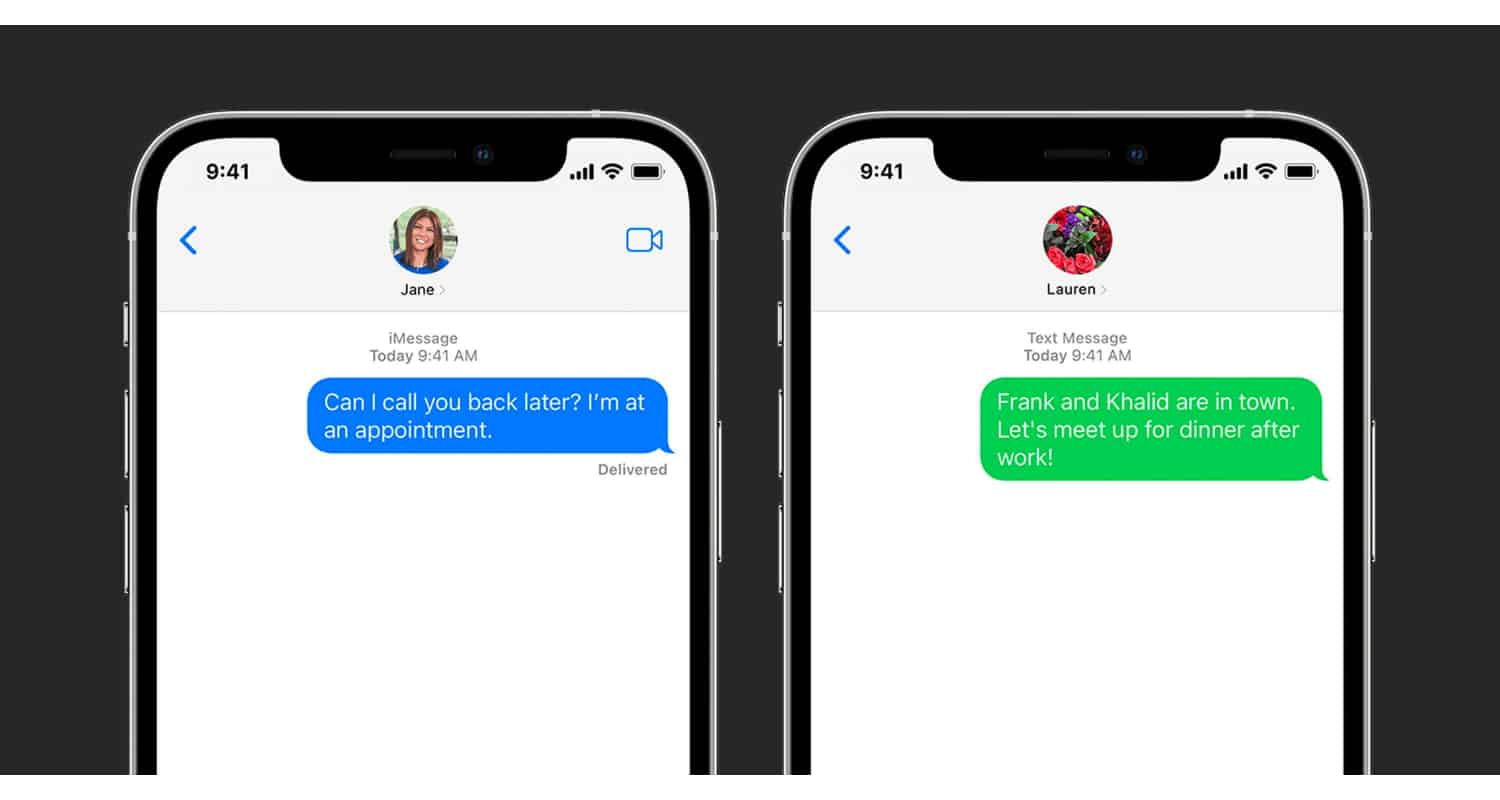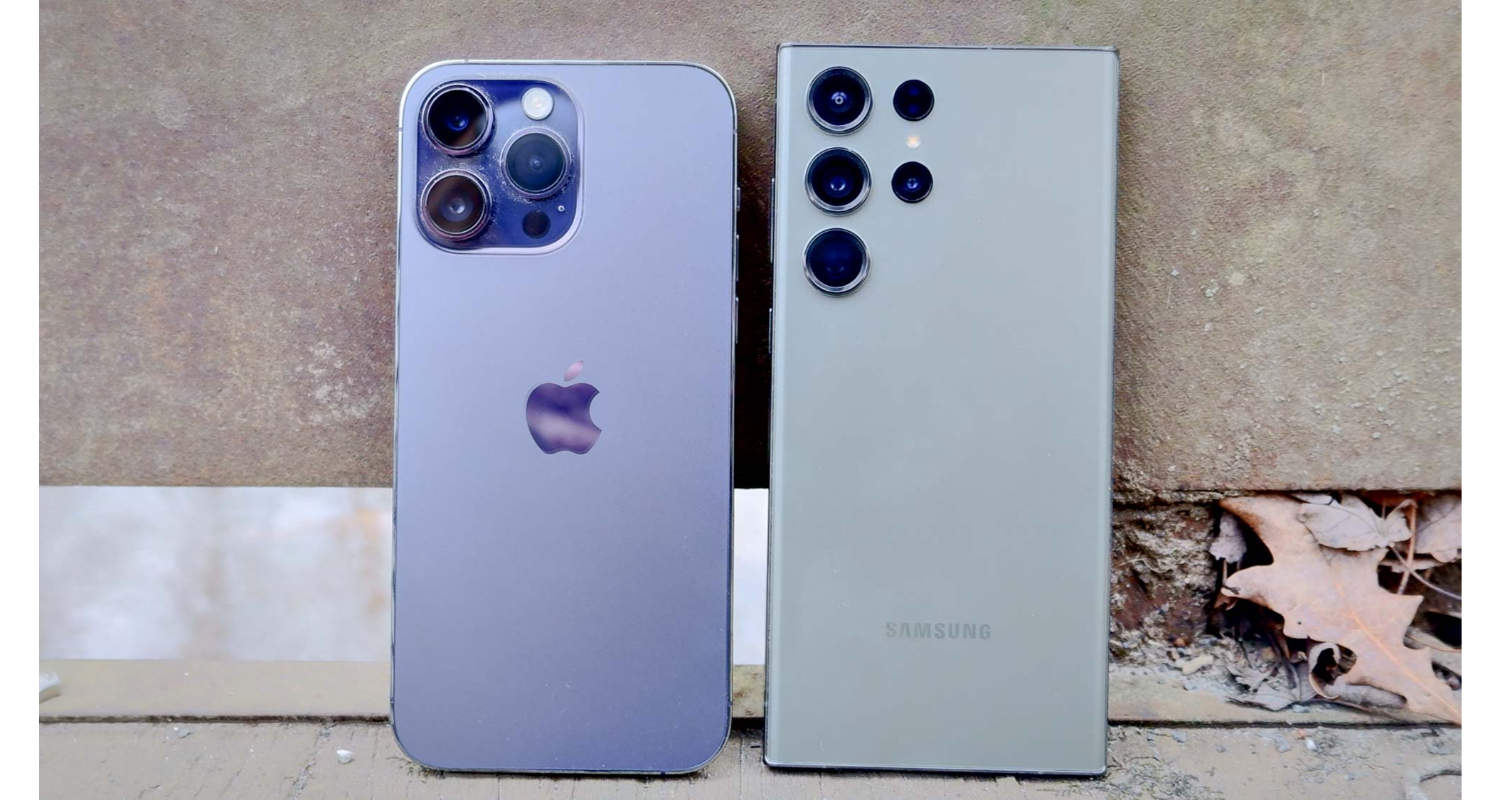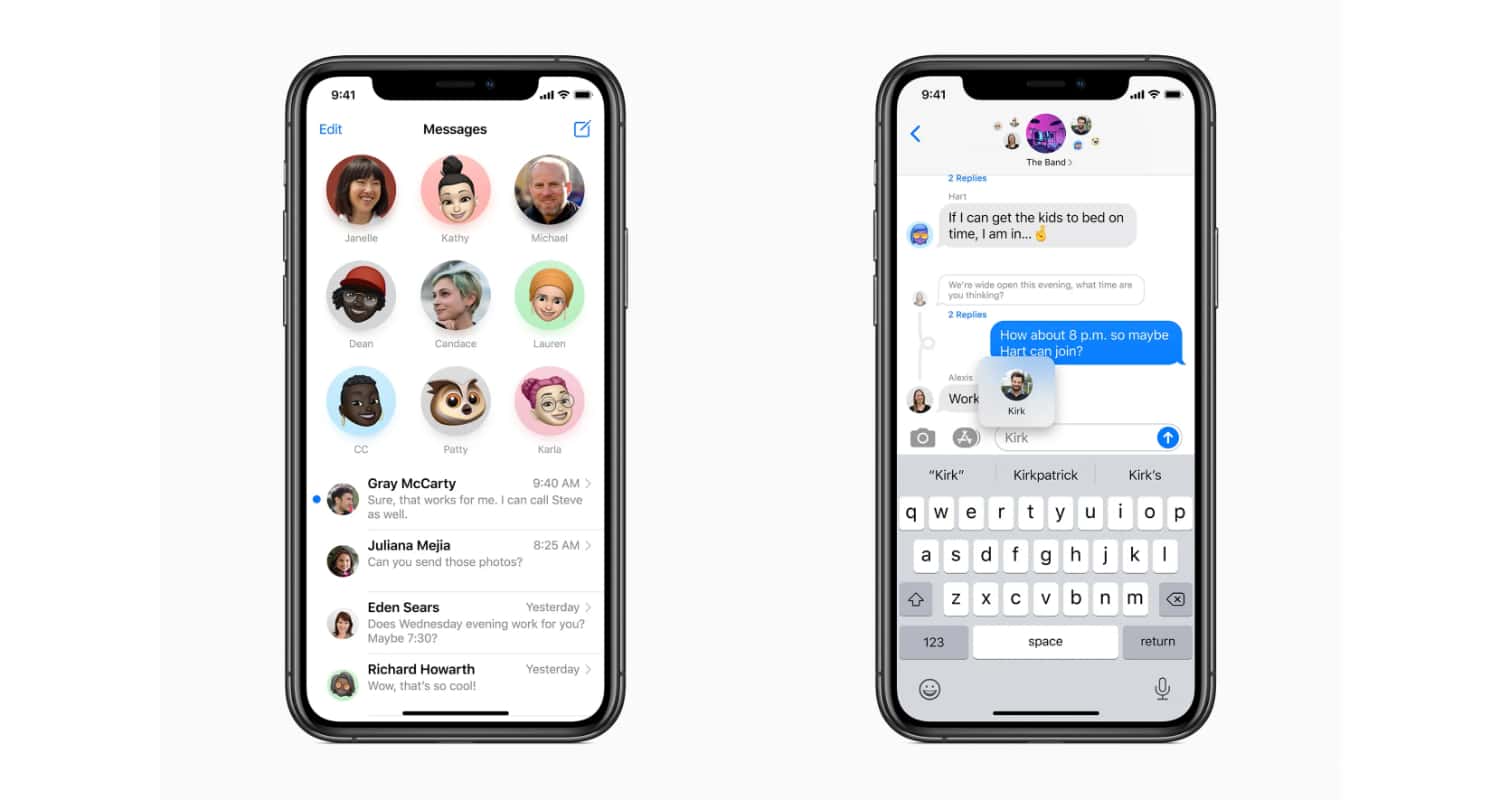
Have you ever found yourself staring at your phone, waiting for that crucial reply from a friend on a different platform? It’s the digital equivalent of watching paint dry, isn’t it? In a world where instant messaging is akin to breathing. Not knowing if your message is being considered or typed out can be maddening. Apple users are accustomed to the little bubbles hinting at a forthcoming response. However, when the conversation crosses the ecosystem border to Android territory, it’s like sending a message into the void. This uncertainty can be a source of frustration and anxiety. But fear not!
No, Apple users cannot see when Android users are typing. Apple’s typing indicators are exclusive to iMessage, which operates only within the Apple ecosystem.
We’re here to dissect this modern-day mystery, explore the depths of cross-platform communication, and offer you the clarity you’ve sought. So, let’s dive into the nitty-gritty of messaging etiquette and technology and finally answer the burning question on everyone’s mind.
See Also: Optimal TruConnect APN Settings For Android: A Guide
Apple’s iMessage vs. Standard SMS
In instant messaging, Apple’s iMessage reigns supreme within its ecosystem. Offering features that standard SMS can’t match. iMessage is Apple’s exclusive messaging service, known for its blue text bubbles. These bubbles signify an encrypted service that operates over the internet. This platform allows users to see read receipts and typing indicators, but only when both parties use Apple devices.
Conversely, standard SMS, represented by green text bubbles on Apple devices, is the old-school texting method. It doesn’t require an internet connection, relying instead on the cellular network. It works seamlessly across all devices but has significant limitations in functionality. SMS doesn’t offer read receipts or indicators for typing. It’s a straightforward communication method that accomplishes the task but lacks the sophistication and capabilities of iMessage.
How Android handles typing notifications
Android, the champion of customization and choice, doesn’t have a native, unified messaging platform like iMessage. Instead, it offers a variety of messaging apps, each with its own approach to typing notifications. For instance, Google’s Messages app, standard on many Android devices, supports typing indicators. But only when both users are on RCS (Rich Communication Services) — the modern take on SMS akin to iMessage.
However, this feature-rich service is not universally adopted so the experience can be inconsistent. Other third-party messaging apps like WhatsApp or Telegram offer typing indicators as a standard feature. They require both parties to use the same app. Android’s decentralized messaging ecosystem means that the typing notification feature is there. However, its availability hinges on the app in use and the recipient’s device capabilities.
What Apple users see when messaging Android users
A common curiosity among Apple users? Whether they can discern the digital body language of their Android counterparts — specifically, “Can iPhone see when Android is typing?” When an Apple user sends a message to an Android user, the immediate question that often comes to mind is: “Can iPhone users see when Android users are typing?” The answer lies in the color of the message bubble. If it’s green, the message has been sent via SMS, indicating that such interactive features are unavailable.
Can Android users get read receipts from Apple users?
Android users, when messaging with someone on an Apple device, face a similar limitation as Apple users do when stepping out of their ecosystem. The standard SMS protocol doesn’t support read receipts, so Android users typically won’t know if an Apple user has read their messages.
However, if both parties use a third-party messaging app that supports read receipts, an Android user could receive a read receipt from an Apple user. This scenario requires that both individuals have the same app installed, such as WhatsApp or Facebook Messenger. These apps bridge the gap between the two operating systems, offering a consistent set of features regardless of the device. So, while the native messaging apps may fall short in this aspect, the app ecosystem comes to the rescue, offering a semblance of the iMessage experience to Android users.
See Also: Best Sites To Download Paid Android Apps For Free
The technical barriers between Apple and Android messaging
A common point of confusion arises with the question, “Can iPhone see Android typing?” This query touches on the technical barriers that exist between the two platforms. Apple’s iMessage system operates exclusively within its ecosystem, utilizing a proprietary protocol that doesn’t align with Android. This means that the typing indicators, a staple of iMessage’s feature set, do not transmit when an iPhone user messages someone on an Android device. The green SMS bubbles that appear in place of iMessage’s blue ones are a visual confirmation of this disconnect.
While iMessage communicates over the internet, standard SMS, which is used for iPhone to Android messaging, does not support the transmission of real-time typing status. This technical limitation serves as a reminder of the distinct pathways Apple and Android have carved in the messaging landscape, each with its own rules and capabilities.
The technical barrier originates from the protocols utilized by each system: iMessage utilizes Apple’s unique protocol, whereas Android messages primarily rely on SMS or the newer RCS when accessible. RCS aims to supersede SMS, providing comparable functionalities to iMessage, yet its implementation remains scattered across carriers and devices, resulting in an irregular user experience. This irregularity worsens due to the lack of a collective push from Android device manufacturers to set a standard for messaging apps and protocols, resulting in a fragmented ecosystem with significant differences in features across various devices.
The lack of a unified approach on the Android side and Apple’s closed system create a chasm that standard messaging simply can’t bridge. This leaves users with a diluted experience, stripped of the convenience and immediacy that modern messaging users have come to expect.
Third-party apps as a solution for cross-platform typing notifications
In the quest to unify the messaging experience across platforms, third-party apps emerge as the knights in digital armor. Apps like WhatsApp, Facebook Messenger, and Telegram offer a platform-agnostic haven where Apple and Android users can coexist harmoniously. These apps bypass the native messaging limitations by creating their own rules, offering typing indicators, read receipts, and a host of other features that are consistent regardless of the device.
For users yearning for the interactive elements of iMessage while communicating with Android users, these third-party apps provide a common ground. They use the internet to send messages, allowing for implementing advanced features not dependent on cellular networks or device-specific protocols.
This not only includes typing indicators. It also extends to sending high-resolution images, videos, and various other file types without the compression that often comes with standard SMS or MMS. The adoption of these apps has been widespread. They have become a de facto solution for many seeking a richer messaging experience. They democratize the features once exclusive to specific platforms and foster a more inclusive environment for communication.
While they require a mutual agreement to use a specific service, their benefits make them a compelling workaround to the technical barriers that have long plagued cross-platform messaging.
See Also: Best Mobile Forensic Tools For iPhone And Android: Expert Picks
How Typing Indicators Affect Privacy
In the digital dialogue between Apple and Android, one question frequently surfaces: “Can iPhones see when Androids are typing?” Typing indicators, those little notifications that someone is crafting a message, can be a double-edged sword regarding privacy. On one hand, they add a layer of transparency to conversations, creating a more dynamic and immediate interaction.
On the other, they can feel intrusive, as if someone is peering over your shoulder, watching your every move. For the privacy-conscious, this can be unsettling. It’s knowing that someone is aware of your activity before you’ve even decided to send a message. It strips away a layer of control over how and when you communicate, potentially pressuring you to respond more quickly than you might prefer.
This subtle psychological nudge can turn the private act of composing a message into a performance. The expectation is to be constantly available and responsive.
User Control Over Read Receipts and Typing Indicators
Fortunately, most messaging platforms, including third-party apps, give users the reins when it comes to reading receipts and typing indicators.
Users can typically delve into the settings and toggle these features on or off. This allows them to choose how much they want to share about their messaging behavior. This control is crucial for those who value their privacy and prefer to communicate on their own terms.
It allows users to maintain a sense of mystery and timing in their conversations. This action preserves the surprise and consideration that can be lost when every action is broadcast. By providing these options, messaging services acknowledge the diverse preferences of their user base. This ensures that everyone can tailor their communication experience to their comfort level.
See Also: Reliable Hearing Test Apps for Android: Check Your Ears Today
FAQs
Can iPhone users see when Android users read their texts?
No, iPhone users can't perceive when Android users have perused their texts, as read receipts aren't supported in SMS, the format employed for iPhone-to-Android messaging.
Do Android users get typing indicators?
Android users receive typing indicators in select messaging apps such as WhatsApp or during RCS-enabled conversations.
Can you tell if someone with an iPhone has read your text on Android?
Cross-platform SMS doesn't provide read receipt functionality between iPhone and Android. Third-party messaging apps offering read receipt features are necessary for this capability.
Why can't I see when someone is typing to me on iMessage?
If you can't see when someone is typing on iMessage, they may have disabled typing indicators, or there could be a connectivity issue with your or their device.
Green text on an iPhone doesn't always mean you're blocked. It simply indicates that the message was sent as an SMS, often used for non-iPhone users or when iMessage isn't available.
Summary of the Possibility and Limitations of Typing Indicators Between Apple and Android
The interplay of messages between different operating systems brings us to a common inquiry: “Can iPhone users see Android typing?” The reality is, within the confines of standard SMS, the answer remains no. The quest to understand if Apple users can see Android users typing reveals a clear boundary drawn by technology and brand ecosystems. Apple’s iMessage operates with a suite of features, including typing indicators, confined to its own devices. Android’s diverse messaging landscape offers similar functionalities but lacks uniformity across devices and carriers. The crux lies in the incompatible messaging protocols: iMessage’s proprietary system and Android’s varied approach to SMS and RCS. While third-party apps offer a workaround, the native experiences remain distinct and separate. This delineation underscores a broader narrative of technological segregation, where platform choices often silo features and functionalities.
Final Thoughts and Best Practices for Cross-Platform Communication
Navigating cross-platform communication requires an understanding of these limitations and an openness to adopting universal apps that bridge the gap. The best practice is to find common messaging ground through popular third-party apps. This ensures that features like typing indicators are accessible to all participants. Embracing these apps can enhance interaction and maintain the flow of conversation across different devices. Ultimately, the goal is to focus on the message rather than the medium, fostering connections that transcend technological barriers.
See Also: Best Gun Apps for Android: Enhance Your Shooting Skills





